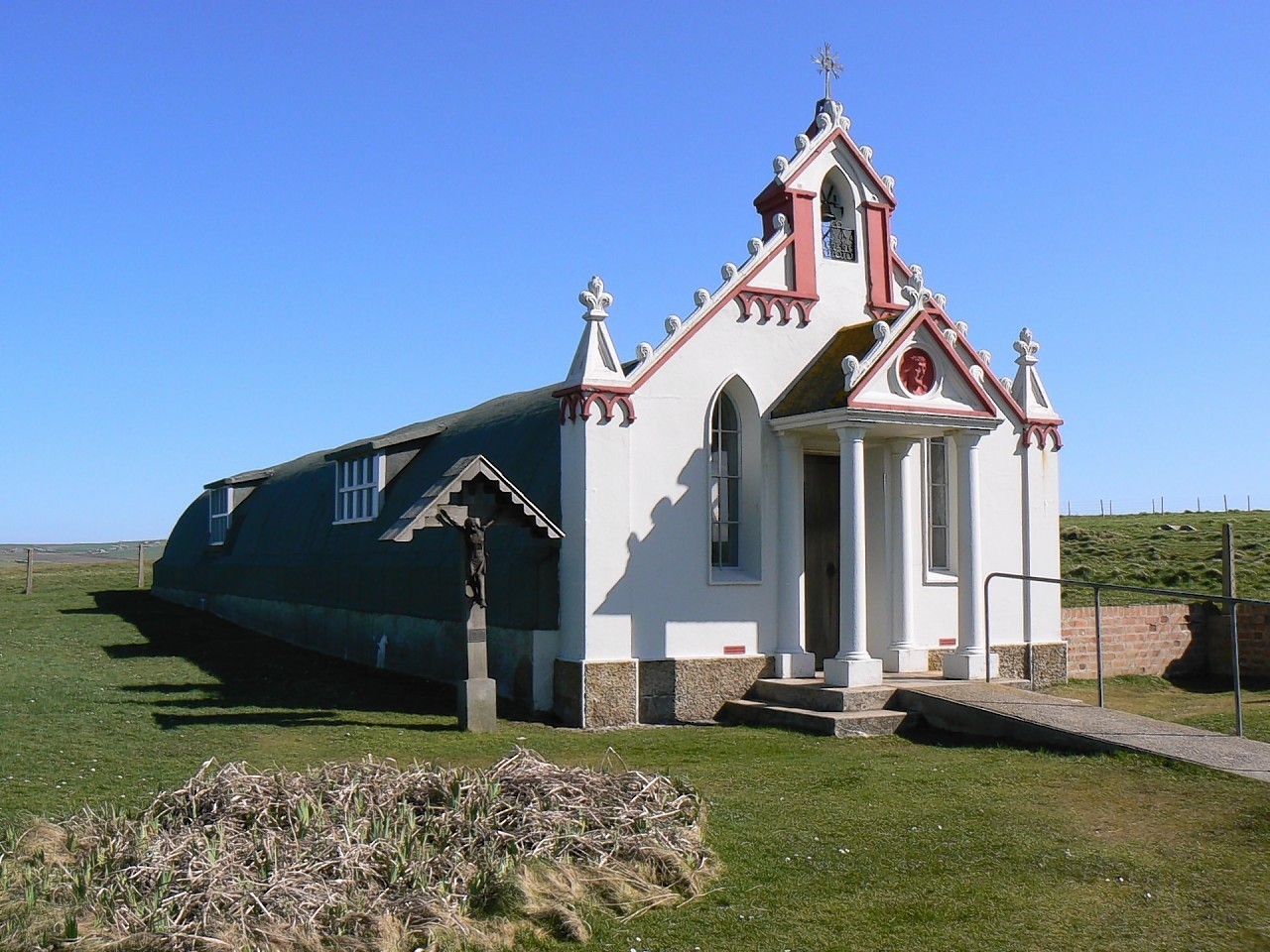Vandals have damaged one of Scotland’s most unusual and iconic landmarks.
Only days after Pope Francis sent a special blessing to the Italian Chapel in Orkney during its 70th anniversary year, it was targeted in a mindless attack.
The chapel was painstakingly created during World War II by Italian prisoners of war and has since become the islands’ top tourist attraction.
Police are appealing for information after a door inside the chapel was battered in on Thursday.
Other churches and tourist attractions were also targeted on the same night.
John Muir, secretary of the chapel’s preservation committee, said an internal door made by the POWs had been destroyed.
The unique door was crafted from plasterboard and stained to make it look like wood.
Mr Muir said: “It survived 70 years but has been destroyed by a pointless act.
“Whoever did this had considerable strength. The door is beyond repair, kicked through and the frame is broken.
“We have a wedding here on Saturday involving a local girl and a groom from Aberdeenshire so we are trying to get the door replaced in time.
“There is nothing of monetary value here. It just seems so mindless to do this to a building such as this.”
A police spokesman said: “We would like to hear from anyone who can help our inquiries, particularly anyone who witnessed any suspicious behaviour in the vicinity of the chapel.”
In his recent message, Pope Francis prayed the chapel, built in time of war, may continue to be “a sign of peace and reconciliation”.
Some 1,200 prisoners were sent to Orkney and many worked building the Churchill Barrier sea defences.
The chapel – known as the Miracle of Camp 60 – was built out of two Nissen huts on the island of Lamb Holm.
“Orkney left its mark on the Italian POWs and they on it,” said Tain-based author Philip Paris, who wrote Orkney’s Italian Chapel.
“Out of it came one of the most moving stories to come out of the war and one that certainly inspires hope and peace to this day.”
Today the chapel attracts 100,000 visitors annually, and is a grade A listed building.
